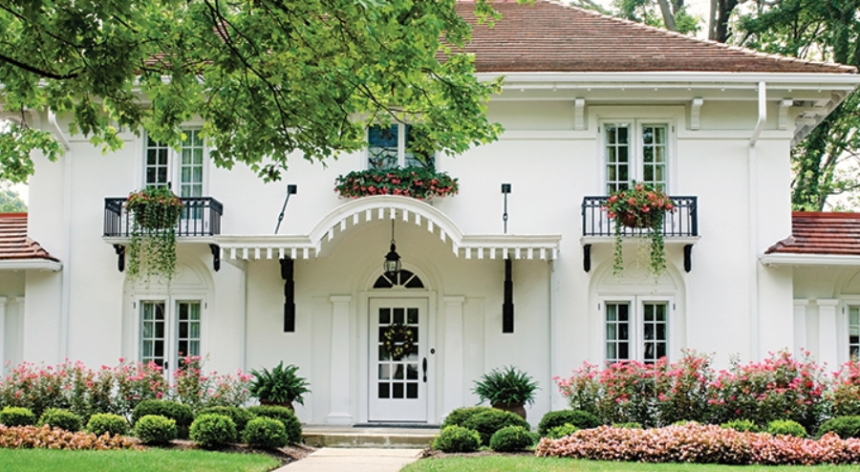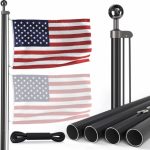When it comes to painting your house, the choice of paint is extremely important. It not only enhances the appeal of your home but also provides protection against various weather conditions. Opting for a paint that offers resistance to weather can help extend the lifespan of your painting project, ultimately saving you time and money in the long term. Let’s discuss the significance of weather resistance when it comes to house painting and provide tips for selecting the paint for your home.
Understanding Weather Resistance
Weather resistance refers to a paint’s ability to withstand weather conditions such as sunlight, rain, wind and temperature fluctuations. A high-quality paint with weather resistance will prevent fading, peeling or cracking easily, ensuring that your home remains beautiful and well protected over a period. If you live in Auckland, the constant rains can pose challenges for your paint. Experienced painters for South Auckland properties understand this and always utilise weather-resistant paints for your homes or commercial buildings.
Choosing Exterior Paint
Selecting the type of paint is crucial when undertaking house painting projects. Exterior paints are specifically formulated to endure conditions that include challenging weather elements. Here are a few factors, as suggested by painters in South Auckland, that you should take into consideration when choosing paint for your home:
1. Climate
Take into account the climate specific to your area.
Living in a region with weather conditions like scorching heat or heavy rainfall means that selecting a paint with weather resistance is crucial. It’s important to look for paints that are specifically designed to withstand the challenges of your climate zone.
2. Paint Quality
Quality should be a priority when choosing paints. Opting for high-quality options from good brands can offer weather resistance, ensuring long-lasting protection for your home. Although they may come with a cost, they can actually save you money in the long term by reducing the need for frequent repainting.
3. Paint Composition
Consider the composition of the paint as well. Look for paints that have a concentration of binders and pigments. Binders help the paint stick to surfaces effectively, while pigments provide both colour and protection against UV rays. A higher pigment concentration helps prevent fading over time, ensuring that your paint job remains vibrant and intact for years.
4. Paint Finish
The finish of the paint also plays a role in weather resistance. Different finishes offer varying levels of durability against weather conditions. Glossy finishes like semi-gloss or satin are particularly resistant to moisture and easier to clean, making them excellent choices for areas exposed to rain or high humidity levels. On the other hand, matte or flat finishes are less resistant to moisture and are more appropriate for areas with minimal water exposure.
Why should you consider the colour selection and weather resistance?
It’s worth considering both colour selection and weather resistance factors when choosing paints that will withstand conditions.
While the choice of colours greatly influences the appeal of your home, it can also impact how well your paint withstands weather conditions. Darker colours tend to absorb heat, causing the paint to expand and contract, which may result in cracks and peeling. On the other hand, lighter colours reflect heat, reducing these potential issues.
Moreover, certain paint colours are more susceptible to fading when exposed to sunlight. Vibrant colours like reds or blues are particularly prone to fading compared to shades such as beige or grey. If you wish to incorporate these colours into your painting project, it might be wise to use them as accents on doors or trim rather than covering the entire house.
Suggestions for Long-Lasting House Painting
To ensure that your house painting withstands time and various weather conditions effectively, consider the following tips:
1. Surface Preparation:
Properly preparing the surface before painting is crucial. Thoroughly clean the surface to remove dirt, debris and any loose or flaking paint. Repair any cracks or damage. Apply a primer if necessary. A prepared surface ensures better adhesion of paint and contributes to its longevity.
2. Application Techniques:
Employ tools and techniques when applying paint. Follow the manufacturer’s instructions regarding temperature and humidity conditions during the application process.
To achieve good coverage, it is recommended to apply thin coats of paint instead of one thick coat. It’s best to avoid painting under sunlight or unfavourable weather conditions.
3. Maintenance:
It is important to inspect your painted surfaces for any signs of wear or damage. If you notice any issues, address them promptly to prevent further damage. Periodically clean your surfaces to remove dirt, mould or mildew, as they can contribute to the deterioration of the paint.
Conclusion
Selecting the paint for your house painting project is crucial in ensuring lasting results. Opt for high-quality paints that offer weather resistance to protect your home from the damaging effects of sunlight, rain, wind and temperature fluctuations. Consider factors such as climate, paint composition and finish when choosing paint. Additionally, be mindful of colour choices, as they can impact both weather resistance and fading. By following these tips and properly maintaining your paint job, you’ll be able to enjoy a weather-resistant home for years to come.













